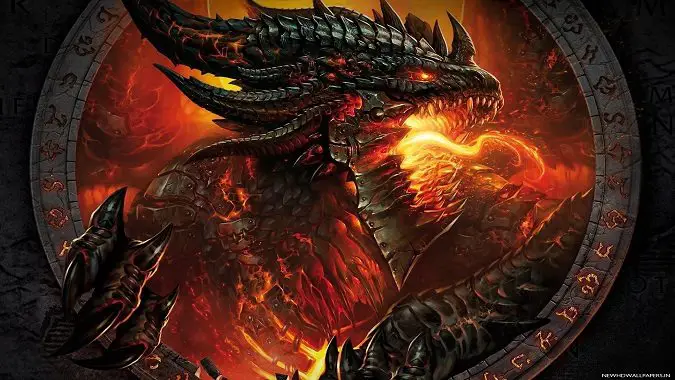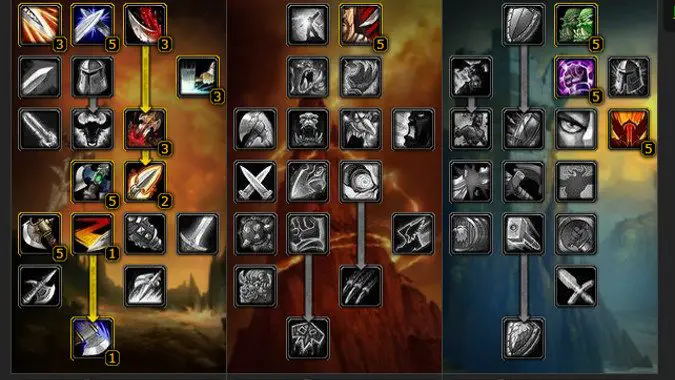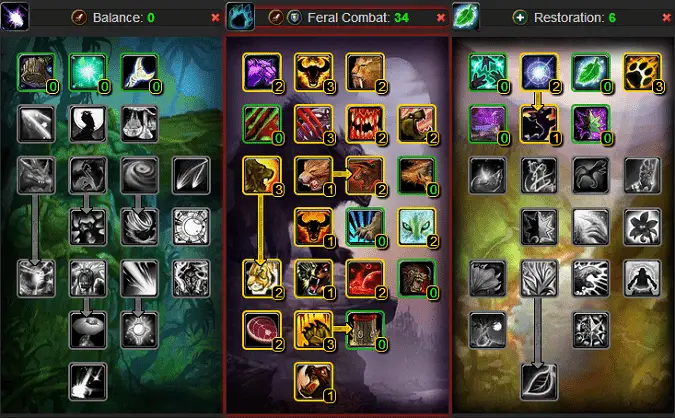How talent trees evolved from WoW’s launch to Cataclysm — and how Dragonflight harkens back to them

The huge talent revamp that came with Dragonflight’s first pre-patch is only the latest model of many, many talent iterations over World of Warcraft’s 18 year history. And as we all get used to our new talents, it’s worth taking a look at the way the talent system has evolved over the years, and the inspirations for Dragonflight’s branching talent tree system. It’s a talent system that harkens to the earliest days of WoW, which had similar branching talent trees from launch through Cataclysm.
If you look back to the oldest talent trees, you’ll see that Dragonflight’s new talent system isn’t just a revival of days past. The latest talent system is a fresh take on the classic talent tree that tries to address some of the difficulties of the original talent system.
So to see where today’s talent system came from, let’s dig into just WoW’s original talent trees worked, and how the system evolved from launch through Cataclysm.

WoW’s original talent trees (and cookie cutter builds)
WoW’s original talent system, which you can still find on Classic era realms in WoW Classic, was created near the end of the game’s development process. In fact, WoW went through two different talent designs in the original beta for the game, the first of which was removed and abandoned by patch 0.6, with the launch version (more or less) added in patch 0.8.
And it would be fair to say that the talent system that we got in patch 0.8 was basically lifted from Diablo 2.
This talent system had 51 points to spend across three talent trees per class (one for each specialization, though they wouldn’t be called specializations until Mists), with 31 point capstone talents that most players aimed for. Since players didn’t have enough points to get two capstones, most characters ended up specializing in one tree more in one tree than the other two, which meant most builds dumped the majority of talent points in a single tree, with a few supporting points in a second tree. One common example for Warriors — the class I played the most back then, and even still today — was the 31/5/15 Arms tanking build.
Originally it was very difficult to change your talents. You had to go to a class trainer to reset your talents — which meant returning to a major town — and it came at a very high gold cost. Each time you reset your talents, the next reset was more expensive, so you didn’t want to experiment or change up talents often. Instead, you usually grabbed a cookie cutter build and stuck with it. The cost of these talent resets changed over the duration of the early game, but remained up until the debut of Dual Specialization in patch 3.1.0 during Wrath of the Lich King.
Of course, that wasn’t the only change the talent system went through in the game’s early days. Talent trees grew in The Burning Crusade and Wrath of the Lich King expansions as players leveled to 70 and then 80. By the time Wrath rolled around, your had 71 talent points to spend at max level, and while the newest capstone talents required 51 points in a tree, some players designed wild hybrid builds using the capstones of previous years.

Cataclysm brought us the first major talent revamp
One of the biggest drawbacks of the WoW’s original talent system was simply clutter: you got one talent point per level, and that meant you had a lot of filler talents that weren’t particularly exciting. Every class had some variant of Cruelty (which increased critical strike), Precision (which increased your chance to hit), or similar talents that made you spend five points in to get the full +5% bonus to the affected stat. While talents like this existed in the game’s earliest days, by the time Wrath rolled around, there was a huge amount of talent bloat.
This led to the game’s first big talent revamp in Cataclysm, which pared talents down to a mere 41 points, with capstone talents for 31 points. With so many fewer talent points, many talents were removed outright or made baseline as a result. The system also forced you to specialize: you had to spend 31 points in your “main” talent tree before spending the rest elsewhere. However, the paucity of talent points — 10 less than World of Warcraft had at launch — and the requirement to spend 31 in you primary tree took a major toll on hybrid classes, which couldn’t take advantage of their versatility until later levels.
The Cataclysm revamp can be seen as the first big overcorrection in talent tree design. From original WoW to Wrath, talent design seemed to be based around the idea that more was always better. The constant addition of talents and talent points ended up giving players a great deal of flexibility, but lead to bloated talent trees full of filler talents. Having all of those cruft talents that simply added numerical buffs rather than meaningful gameplay changes meant you had a lot of standard cookie cutter builds, which mainly featured must-have stat buffs.
You might think that paring down talents would help with the game’s talent bloat, but the Cataclysm revamp did little to address the problem. Being forced into specialization for most of your levels, combined with the limited number of points you could put into other trees meant that players had fewer chances to explore talent options. As a result, we saw even more cookie cutter builds.
This isn’t to say that there was nothing good about the Cataclysm talent changes. While the need to put 31 points in a tree in a system with only 41 points severely limited what you could do, it also channeled characters in a specific direction — something Mists focused on with its talent specialization system, which lasted through Shadowlands.
For all its failings, the Cataclysm system serves as a sort of exemplar of what the Dragonflight talent system is trying to do. The class talents from Dragonflight feel a lot like a response to the limitations of Cataclysm’s version of talent trees, letting you specialize with a spec tree while exploring broader class options and hybridization in a class tree. These modern trees also cut back on cruft, cutting out the five-point talents that added so much bloat to the game’s early talent trees (even though the new system still has talents that cost two or three points to max out).
It’s fair to say that the talent system from launch to Cataclysm were designed to give players options… even if a lot of those “options” were sunk into bloated, multi-point talents. The changes we see as the years roll by were aimed at enhancing those options without making players feel locked into choices. Though the system didn’t always work out that way, it was a good goal.
And now Dragonflight takes us back to the old days with a new take on the classic talent trees. Whether it will meet its goal of giving players options and customization is yet to be determined, and may depend on how the system evolves over this expansion… and the next expansion, and the one after that.
Please consider supporting our Patreon!
Join the Discussion
Blizzard Watch is a safe space for all readers. By leaving comments on this site you agree to follow our commenting and community guidelines.
 @MatthewWRossi
@MatthewWRossi



